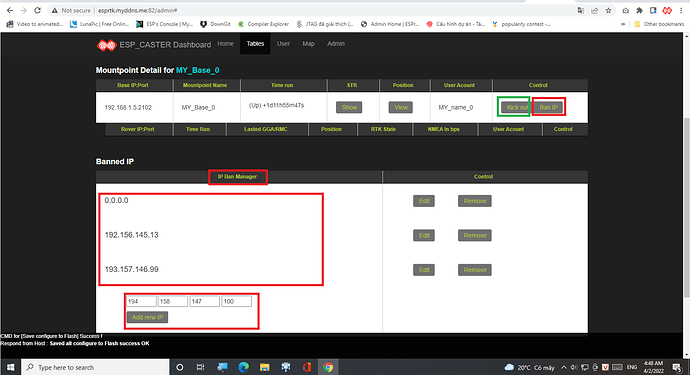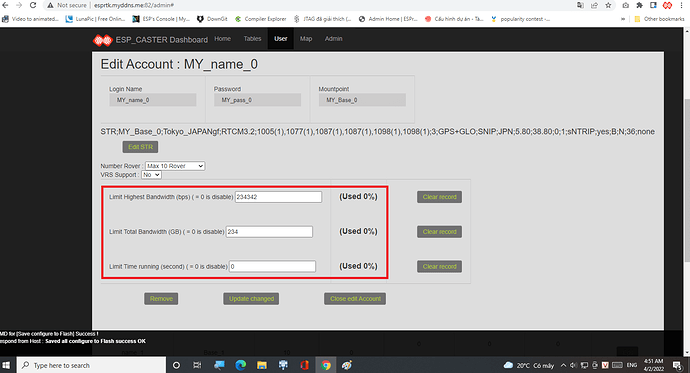@bluerabbit and @torriem .
You both have your right opinions.
I completely agree with both of you.
NTRIP is not really good but still not too bad to remove .
The future of NTRIP will certainly have to change a lot if it is not to be beaten by MQTT, because NTRIP hardware performance (processor chip) proves stressful for deployment in large numbers.
However, NTRIP is still very popular so we support both (NTRIP and MQTT).
Hopefully @bluerabbit will solve his problem after switching to a public account on rtk2go.
RTK2GO is a free service and it is fair that they are trying to keep things free to use as efficiently as possible. And ip ban is such a thing.
@torriem I really understand how you feel.
Do you want to try with ESPrtk? I think this is the right time for you to try using a CORS server of your own.
Thank you for your support and help in the past time on AGOPENPS forum. I would suggest to ESPrtk Team to give you a special offer asking you to send the activation key when sending email to contact@esprtk.com .
Here is an example for a public CORS server running on ESP32 .
NTRIP : http://esprtk.myddns.me:2102
- Mountpoint : Base_0
- Username NTRIP : name_0
- NTRIP password: pass_0
Profile : http://esprtk.myddns.me:82/admin
- Username Profile: admin
- Profile Password: abc123ABC
CORS Dashboard : http://esprtk.myddns.me:82/admin
- CORS Dashboard username: admin
- CORS Dashboard password: abc123ABC
And of course, with it, you will have the highest permissions of the CORS NTRIP server administrator and can set up IP bans, monitor immediate disconnections or IP bans with an active Client. , track location via GGA messages and user thread speed , limit bandwidth and resources with accounts … the same way NTRIP’s admins are doing !

